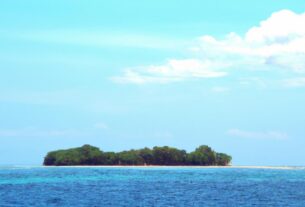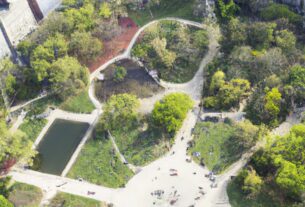Red crabs have captivated nature enthusiasts with their vibrant red color and awe-inspiring annual mass migration. But have you ever wondered where these fascinating crustaceans call home when they’re not on the move?
Red crabs, also known as Christmas Island crabs, are native to Christmas Island, a small Australian territory in the Indian Ocean. This tropical paradise, characterized by dense rainforests, rocky cliffs, and pristine beaches, provides the ideal environment for red crabs to thrive.
Habitat of Red Crabs
Discovering their Preferred Habitat
Red crabs primarily inhabit the moist rainforests and rocky outcrops of Christmas Island. These habitats offer everything they need to flourish, including ample food sources, shelter, and protection from predators.
Christmas Island’s rainforests are a bustling ecosystem, with tall trees, vines, and ferns creating a dense canopy. The forest floor, covered in fallen leaves and branches, provides a crucial food source for red crabs. The moist conditions of the rainforest also help keep the crabs hydrated, ensuring their survival.
Geographical Areas of Concentration
While red crabs are exclusive to Christmas Island, they are not equally distributed throughout the entire island. Instead, they tend to concentrate in specific areas, such as the rainforests and coastal regions.
During the breeding season, which usually occurs between October and December, the crabs embark on a remarkable journey to the coast. This mass migration, where millions of crabs move in unison towards the sea, is one of the most breathtaking natural events on Earth.
Factors Influencing their Habitat
The habitat of red crabs is highly influenced by physical and environmental factors such as temperature, humidity, and rainfall. Changes in these factors can significantly impact the crabs’ survival and breeding patterns.
For instance, during periods of drought, the rainforests may become drier, making it challenging for red crabs to locate food and water. Additionally, shifts in temperature and humidity can affect the timing of the breeding season, thereby impacting the entire ecosystem of Christmas Island.
Life Cycle of Red Crabs
Red crabs have a fascinating life cycle intricately linked to the changing seasons on Christmas Island. Understanding this life cycle is crucial to appreciating their ecological significance and the challenges they face.
Stages of the Life Cycle
The life cycle of red crabs commences with the female crab carrying eggs in a mass under her abdomen. After hatching, the larvae are released into the ocean, where they develop for several weeks before returning to land.
Once the larvae reach the shore, they undergo metamorphosis into juvenile crabs and begin their journey into the forest. The juvenile crabs spend several months in the forest, growing and developing until they reach maturity.
Reproduction and Breeding Habits
Red crabs have a unique breeding season synchronized with the lunar cycle. During this period, typically between October and December, male crabs migrate to the coast to mate with females.
The fertilized eggs are then carried by the females under their abdomens until they hatch and are released into the ocean. This process continues until the female runs out of eggs or perishes, which can take several weeks.
Lifespan and Factors Affecting It
While red crabs have a relatively short lifespan, lasting only one or two breeding cycles for most individuals, determining their exact lifespan is challenging. Predation, disease, and environmental conditions all influence their lifespan.
Habitat loss poses one of the most significant threats to the survival of red crabs. Deforestation and urbanization have diminished their available habitat, making it harder for them to survive and reproduce. Consequently, conservation efforts are paramount in protecting these captivating creatures and ensuring their continued existence on Christmas Island.
Behavior of Red Crabs
Red crabs exhibit unique behavior and social interactions, despite their small size. They are a captivating subject of observation and scientific study. Let’s delve deeper into their behavior and their ability to adapt to their environment.
Insight into their Behavior
Red crabs are most active during the wet season when they migrate to the coast to mate and lay eggs. During this time, males dig burrows in the sand while females mate with multiple partners before returning to the forest to lay their eggs.
Outside the breeding season, red crabs are primarily solitary creatures that forage for food in the forest. Their omnivorous diet consists of fallen fruit, leaves, small insects, and other invertebrates.
Social Structure and Interactions
While red crabs are predominantly solitary, they do showcase social behavior. During the migration season, the crabs form colossal aggregations as they make their way towards the coast. This behavior serves to protect them from predators and ensure the survival of the species.
Red crabs also engage in aggressive behavior towards each other, particularly during the mating season. Males compete for the opportunity to mate, with the victor often mating with multiple females.
Adaptation to the Environment
Red crabs have evolved remarkable adaptations to thrive in the unique environment of Christmas Island. Their vibrant red color serves as a warning to predators, indicating their toxicity. They possess robust claws that enable them to climb trees and traverse the island’s rocky terrain.
Overall, studying the behavior of red crabs sheds light on their remarkable adaptations to their environment.
Importance of Red Crabs
Red crabs are not only captivating creatures but also play a crucial role in the Christmas Island ecosystem. Let’s explore their significance in greater detail.
Their Role in the Ecosystem
Red crabs contribute significantly to nutrient cycling on Christmas Island. Their burrowing activities aerate the soil, promoting the growth of plants and other organisms. Additionally, they serve as a vital food source for other species, including birds and reptiles.
Human Uses and Benefits
Although red crabs are not commonly consumed by humans, they do have some practical applications. Their shells are used for decorative purposes, and their striking red color has inspired fashion designers and artists alike.
Moreover, the mass migration of red crabs has emerged as a major tourist attraction on Christmas Island, inviting visitors from all corners of the globe. This tourism boom has provided an economic boost to the island, with the tourism industry becoming one of its mainstays.
Conservation Efforts and Threats to Their Survival
While red crabs are not currently classified as endangered, their long-term survival is a concern. Habitat destruction poses a significant threat, as deforestation and infrastructure development disrupt their burrowing activity and impact their food sources.
Dedicated conservation efforts are underway to safeguard the habitat of red crabs. The establishment of the Christmas Island National Park is one such initiative aimed at preserving the island’s unique flora and fauna, including the red crabs. Additionally, regulations are in place to minimize the impact of human activities on the island.
In conclusion, red crabs are an integral part of the Christmas Island ecosystem, playing a vital role in nutrient cycling and providing sustenance for other species. Their bright red coloration and annual mass migration have also drawn global attention, bolstering tourism and providing economic benefits. However, ongoing conservation efforts are crucial to protect their habitat and ensure their long-term survival.
Thank you for joining us on this journey to uncover the secrets of where red crabs live and unraveling their importance. For more captivating articles on nature, gardening, and animals, visit TooLacks, your go-to source for insightful content.


